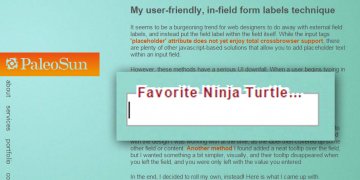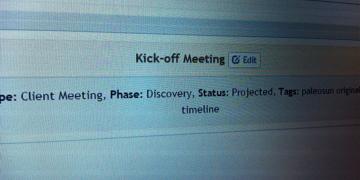Photo by anyjazz65 / CC BY 2.0
It can be expensive for a business to redesign/redevelop its website. And it’s natural, in the interest of getting the most bang for the buck, to want to know how long a new website will last. The answer is, as with so many things, that depends.
There are two approaches that affect the lifespan of a website. One is to work on a website on an ongoing basis, making iterative changes over time. The other approach is to periodically overhaul the entire site. Each has its pros and cons, and we’ll explore them in more detail below.
Ongoing Iterative Improvements
Every website needs maintenance, but this approach goes beyond the standard news posts and CMS version updates. It requires a dedicated person or team who can work toward business goals by leveraging website data (analytics, user feedback, etc.) and strong creative direction. Because changes are made on an ongoing basis, the design rarely makes a big leap, easing any disruption issues for returning visitors.
This approach is probably best suited to websites that handle business critical functions, such as e-commerce, ad supported, or subscription based websites. The really big online retailers and big name brands maintain their websites this way (think of Amazon).
Pros
- Instead of a one-time major investment, the cost is spread out over time.
- If managed well, there is the potential for a much higher return on investment (ROI).
- You can be more responsive to new advances and web standards.
- The lifespan of the website is effectively limitless.
Cons
- The total investment is often higher over the same amount of time.
- If it isn’t managed well, it can result in one big mess.
Periodic Major Overhaul
Many website owners are probably already familiar with the periodic major overhaul approach. It is commonly triggered by the feeling that the aesthetics are getting out of date, or because of a decline in desired outcomes. This approach is better suited to websites that are less dynamic, requiring fewer updates, like the brochure or portfolio style websites of small businesses/nonprofits.
Pros
- Despite being a large initial expense, the cost over time is likely to be smaller.
Cons
- Sometimes, the large single investment can be difficult for budgeting.
- The lifespan of the website is relatively short (3-5 yrs).
- Lifespans for this approach have been shrinking due to the accelerating pace of change online.
A Hybrid Approach
The two approaches are not mutually exclusive. In fact, many of our clients’ websites combine them to some degree. The advantage here is in extending the site’s lifespan and/or improving ROI, while keeping ongoing costs manageable. However, these sites usually end up with a major overhaul at some point.
Whatever approach you like, we like to remind our clients that your website should be working for your business. It should increase revenue, decrease costs, and/or increase customer satisfaction and loyalty. By focusing on outcomes in this way, you can find the right amount of effort to apply to get the best returns, no matter how long the site lasts.





Comments (0) Write a comment
Leave a Comment